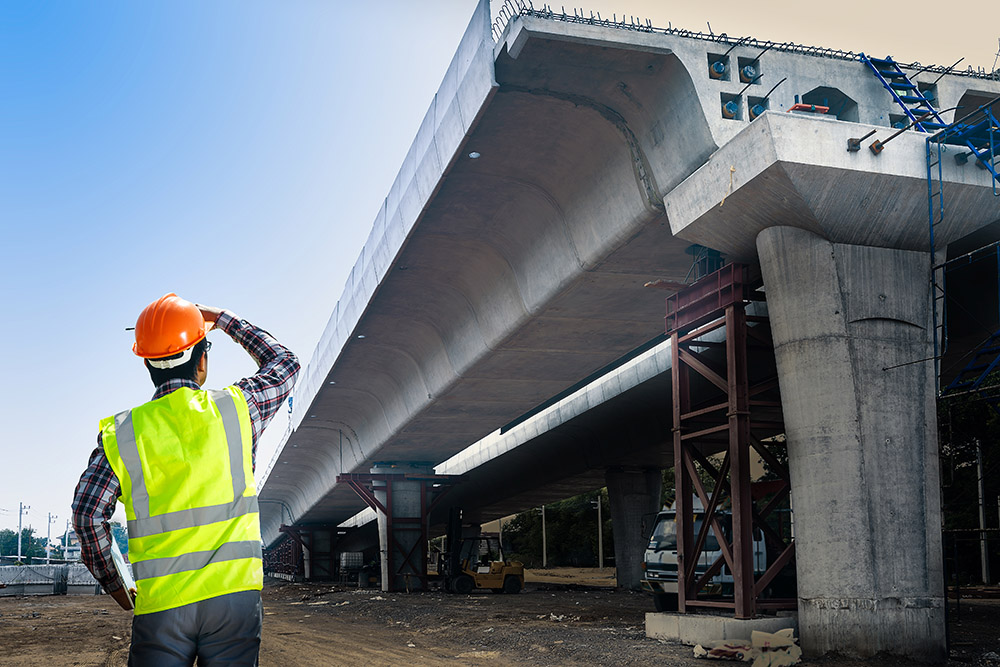
A recent study by Gabriel Castelblanco, Ph.D., an assistant professor at the M.E. Rinker, Sr. School of Construction Management in the UF College of Design Construction and Planning, explores how including a variety of interested parties in the planning and execution of transportation infrastructure projects – primarily when they affect users’ pockets, like toll roads – can ultimately lead to successful outcomes.
“Given the systemic funding shortages in U.S. transportation infrastructure due to the decline in fuel tax revenues, driven by the rise of fuel-efficient vehicles and electric vehicles, it is imperative to explore alternative funding mechanisms beyond increasing taxation,” Castelblanco said.
In the case study Stakeholder Dynamics: Rethinking Roles and Responsibilities in User-Pay Transport PPP Projects, published in the Journal of Construction Engineering Management, Castelblanco posits that in addition to the stakeholders we usually envision leading large transportation projects, such as companies and government agencies, it is vital for other people to be involved in the shaping of these projects as well.
Castelblanco’s research delves into the relationships between stakeholders and divides them into three distinct groups: responsible, impacted, and interested. For example, the company and government agency contracted to manage the entirety of a road construction project are considered the responsible stakeholders. Local community members affected by the construction of a road/toll road are the impacted stakeholder group. Non-governmental organizations (NGOs), chambers of commerce, and environmental activists fall into the interested stakeholder category.
In transportation projects, focusing only on the internal decision makers (i.e., responsible stakeholders) ignores or overlooks the interested and impacted external stakeholders, whose interests and influence are crucial to the long-term success of any project.
“Understanding and engaging with these external stakeholders is essential within a more holistic governance framework,” he said. “This broader, more inclusive approach to stakeholder engagement helps to mitigate risks, ensures sustainable project outcomes, and fosters public trust and social legitimacy.”
When these groups don’t come together to talk, issues arise, leading to misunderstandings that, in the long run, will increase project costs over time. For example, stakeholders in the impacted group may feel their voices are not being considered when a large road construction project is planned in their area. Overlooking the needs of the local community or the impacted stakeholders could have negative consequences, leading to protests and rendering the project to a standstill. Contractors and government agencies lose a significant amount of money when this happens. By including all stakeholders early in the planning process, the project will have a better chance of running smoothly and having better outcomes for all.
At the Road User Charging Conference in Miami, Florida, in May 2024, Castelblanco addressed other aspects of transportation funding. For example, he introduced various innovative financial models, including crowdfunding, to ameliorate this issue and as tools for funding transportation infrastructure projects. Crowdfunding through social networks and the internet gives people the power to raise funds collected from many individuals to help finance a variety of personal and business interests.

“Crowdfunding for local infrastructure has been successfully implemented in several countries, including the Netherlands, where it has proven to be an effective tool for financing projects that directly benefit local communities,” Castelblanco said. “These initiatives serve as relevant precedents for similar approaches elsewhere, demonstrating the potential of community-driven funding to address specific needs, foster social engagement, and ensure the long-term sustainability of infrastructure projects.”
Crowdfunding helps fill the gap where public funds are falling short. As funding sources for state DOTs are declining due to lower gas taxes, more efficient vehicles, and the prevalence of electric cars, finding alternate funding sources for transportation projects is essential. Castelblanco believes that crowdsourcing transportation infrastructure projects will enable communities to feel a sense of support, ownership, and connection with a proposed project.
“This approach not only addresses funding gaps but also strengthens community involvement, enhances demand for user-pay infrastructure, and bolsters social legitimacy for transportation innovations,” Castelblanco said.
Innovative approaches such as the ones that Castelblanco has worked on show that stakeholder groups extend beyond companies and government agencies. Inclusivity is essential, ensuring that communities feel their voices are heard, leading to better project outcomes. Furthermore, implementing creative financial tools such as crowdfunding to finance transportation projects may pave the road for more substantial support from local communities.
